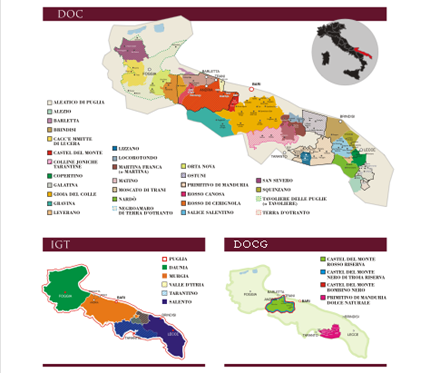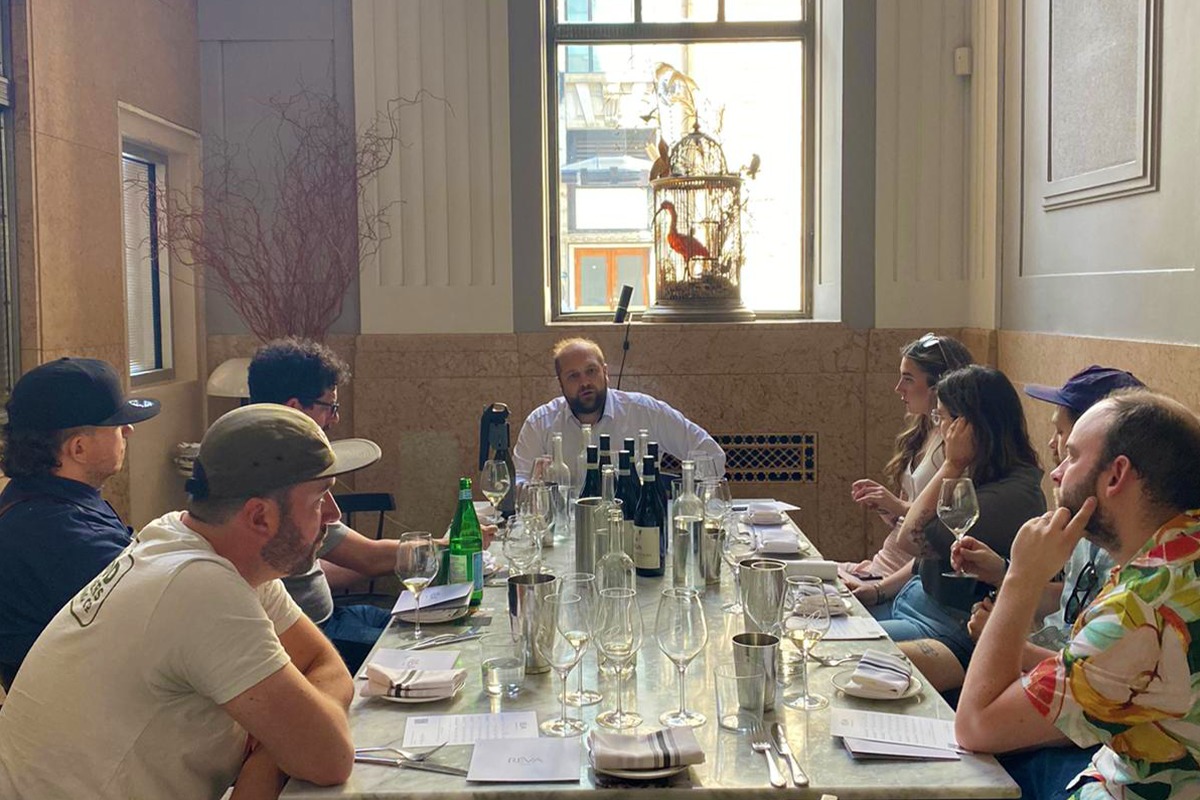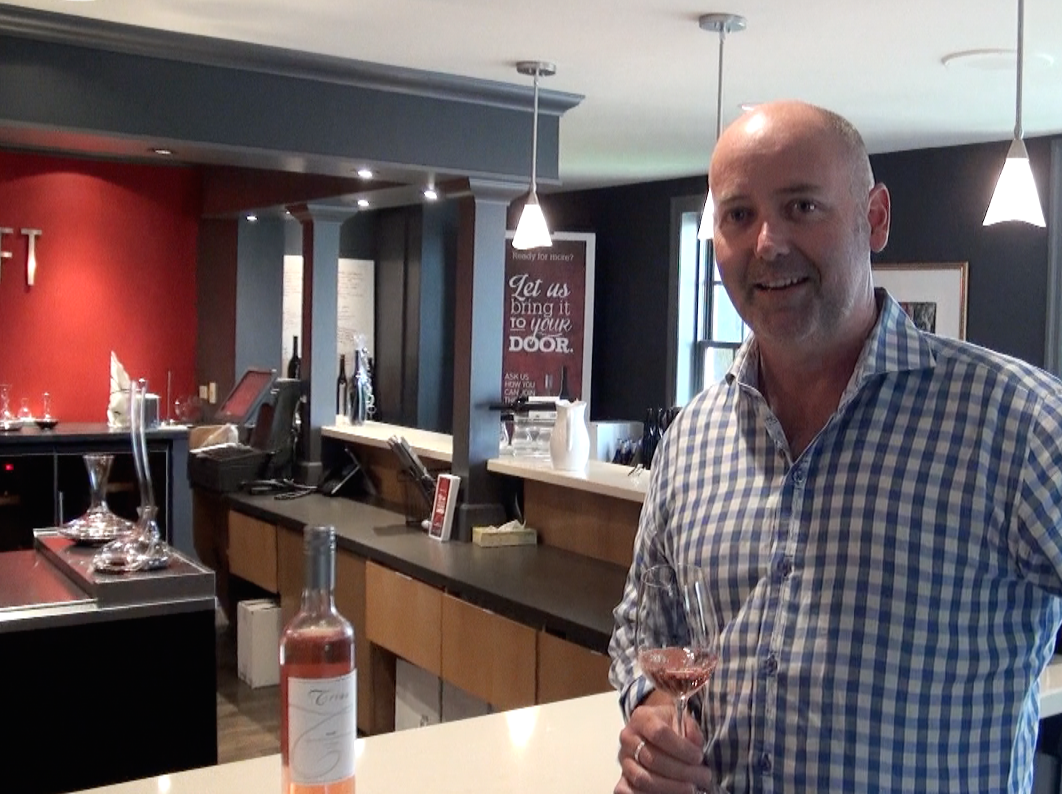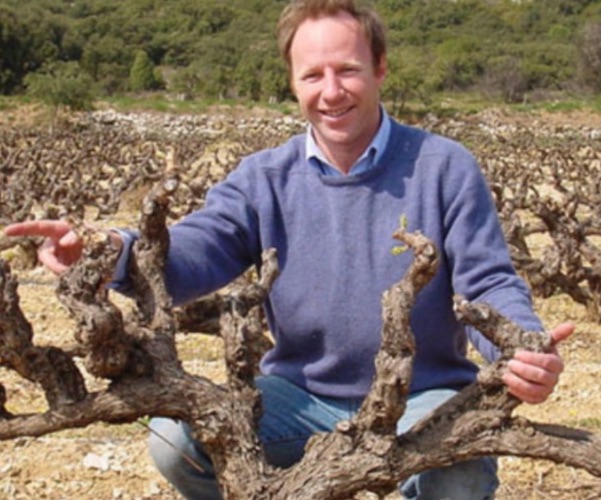Puglia has more vineyards than any other region in Italy except Sicily, and produces a significant portion of some of Italy’s best olive oil. That is because Puglia is the least mountainous of Italy’s 20 wine regions, with the vast majority of its vines on fertile flatlands in one of the hottest and driest regions of Italy. You can identify it on a map of Southern Italy as the heel of Italy’s boot. So it was fitting that the ‘Wines of Puglia’ staged a tasting at the Bata Shoe Museum in Toronto this summer. Daniele Cirsone, Marketing Director for Movimento Turismo del Vino Puglia led us through the seminar and sampling of seven red wines of Puglia.
The Puglia wine region splits into two distinct areas. To the north is the appellation of Castel del Monte, home to three of Puglia’s four DOCGs (controlled designation of origin guarantee, Italy’s highest quality category). Within this northern region, red wines dominate in the limestone and volcanic soil in the hillier areas of the far north, while Puglia’s white wines come largely from the clay and sandy soils of the central flatlands. To the south is the other major area, Salento, which enjoys a more temperate climate because of cross breezes between the Adriatic Sea to the north and the Ionian Sea to the south. It is the region’s iron rich red soils that give Salento red wines their distinctive rustic character.
The main red grapes of Puglia are Primitivo, Nero di Troia and Negroamaro. Primitivo, genetically linked to California’s Zinfandel grape which is related to the Croatian Crljenak varietal, is so named because it is the earliest ripening red grape of Puglia. As a result, it is harvested early, in mid-to-late August. Medium skinned with a juicy pulp, it can reach a high sugar level that can translate into alcohol levels of up to 17%. Opulent cherry flavours dominate Primitivo-based wines. Nero di Troia produces highly structured wines due to high tannins that develop in the thick skins of this black grape. It matures later in October and is a challenging grape to monitor in the intense summer heat. Blackberry jam, black pepper and dried red flowers are the markers for this grape. Negroamaro is the oldest and most cultivated varietal in Puglia that takes its name from the word for black in both Latin (“Negro”) and Greek (“Maru”). Its small berries develop thick skins with good acidity that produce powerful, age worthy wines, recognizable by scents of thyme and licorice root. The rustic red wines of Salice Salentino based on this varietal have improved considerably in quality as producers have dramatically lowered yields. Aglianico is an early budding, later ripening red varietal with high tannins and acidity that make well structured wines with great ageing potential.
Of Puglia’s white varietals, the workhorse is Bombino Bianco, previously known for its high yields and used for bulk wines. Now, this grape with its very lively acidity is being used to make fresh, delicate white wines. Verdeca is a late ripening white grape used primarily for blending which, in Puglia’s warmer climate, produces wines with greenish flavor characteristics and a gentle trace of bitterness. Bianco D’Alessano produces simple, light white wines that are often blended with aromatic white varietals.
Puglia rosé wines are made using the Salasso method, where red grapes are macerated with their skins for a short while, after which the slightly coloured free run juice is removed from the bottom of the tank and fermented. Negroamaro and Bombino Nero are the two red varietals used, with the latter restricted to rosés because of its extremely delicate skin.
TASTING NOTES:
Varvaglione Vigne & Vini Zinfandel Salento IGP 2012 ($15; 14.0%; Caliber Fine Wines and Spirit) is a plum coloured wine made from 100% Primitivo grapes aged three months in French oak. Medium bodied, this fruit driven wine shows ripe red cherry fruit, with a subtle earthy aspect of black and green olives and a hint of salinity, framed by soft wood tannins. ![]()
Tormaresca Torcicoda Salento IGP 2012 ($15.99; 14.5%; Mark Anthony Brands) is another Primitivo varietal wine, aged for ten months in French and Hungarian oak and a further eight months in bottle before release. Red plum with garnet hues, this non-filtered wine has a palate of black cherry, black pepper and licorice, with cigar box and cedar undertones. ![]()
Tenute Emera Sud del Sud Salento IGP 2012 ($9.60; 14.5%; no agent) is a blend of Negroamaro (35%), Primitivo (35%) and equal parts Merlot and Syrah. Aged 60% in stainless steel tanks and 40% in new American oak, this approachable wine has a highly aromatic nose. Red cherry and plum fruit flavours intermingle with subtle spicy notes of licorice, balsamic and tomato leaf in this lighter bodied wine. ![]()
Leone de Castris 50 Vendemmia Salice Salentino DOP Riserva 2010 ($19.95; 13.5%; Halpern Wine) is an elegant wine made from Negroamaro (80%) and Malvasia Nera (20%) grapes that were aged for 12 months in French oak and 6 months in bottle. Ripe cherry fruit is balanced with forest floor nuances and spicey notes of basil, thyme, tarragon and licorice in the lingering finish. ![]()
Duca Carlo Guarini Boemondo Salento IGP 2010 ($14.80; 14%; Amano Import) is made from 100% Primitivo aged in Slovenian oak for 12 months. Red plum and dried cherry fruits intermingle with savoury herbs and earthy undertones in this well balanced, medium bodied wine. ![]()
Carvinea Sierma Salento IGP 2009 ($16; 13.5%; Cavinova) is made from the Aglianico varietal and aged for 10 months in French oak and 12 months in bottle. It delivers flavours of dried cherries and cranberries with subtle orange peel and lingering nuances of smoked meat and moist tobacco pouch.![]()
Rivera Il Falcone Castel del Monte DOP Riserva 2008 ($23.90; 13.5%; Lifford Wine & Spirits) is a blend of Nero di Troia (70%) and Montepulciano (30%) aged 14 months in French oak (half in 30 hectolitre casks and half in 225 litre barriques). The flagship offering of this winery, it has a subtle chalky, salty aspect on the palate from the influence of the sea. Ripe fruit and appealing sweet savoury and spice notes interplay with subtle herbaceousness in this complex wine. ![]()
Puglia wines have a growing presence in our markets and, with their improving quality and affordable price points, will reward those willing to experiment with one of the up and coming wine regions of Italy.
All Scores out of five apples.
 Margot Ritchie is a Toronto-based journalist, whose articles focus on wine and culinary trends. A member of the Wine Writers’ Circle since 1997, she has travelled throughout many of the major wine growing regions of Europe and North America. These include Austria, France, Italy, and Portugal, as well as California, New York State and Ontario. Spirits, sake and beer are also highlighted in her writings, where her travels have extended to Scotland, Japan and the Czech Republic.Margot’s wine columns have appeared in Del Condominium Lifestyle, Elite Wine, Food and Travel, Modesty Magazine, International Women’s Forum (IWF) – Toronto Chapter Newsletter and the Portuguese Post . Margot also advises on private wine cellar management.
Margot Ritchie is a Toronto-based journalist, whose articles focus on wine and culinary trends. A member of the Wine Writers’ Circle since 1997, she has travelled throughout many of the major wine growing regions of Europe and North America. These include Austria, France, Italy, and Portugal, as well as California, New York State and Ontario. Spirits, sake and beer are also highlighted in her writings, where her travels have extended to Scotland, Japan and the Czech Republic.Margot’s wine columns have appeared in Del Condominium Lifestyle, Elite Wine, Food and Travel, Modesty Magazine, International Women’s Forum (IWF) – Toronto Chapter Newsletter and the Portuguese Post . Margot also advises on private wine cellar management.








